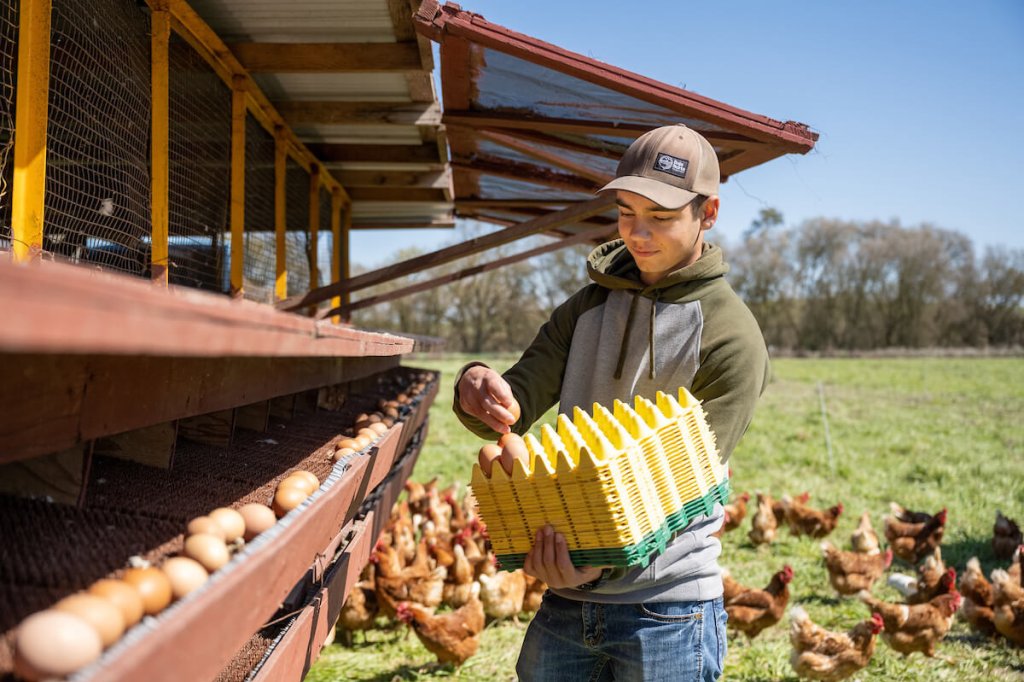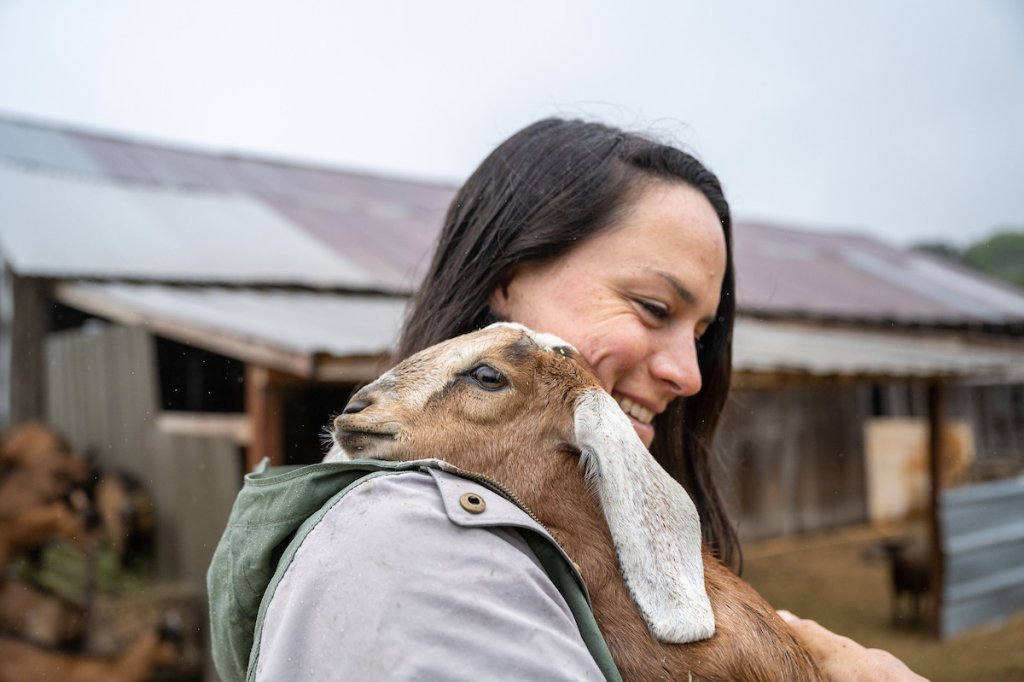A special two-part series about the 2022 Census of Agriculture:
Part 1: What the 2022 Census of Agriculture Confirms about California
Part 2: Investing in California Farmers to Protect Our Food System
Investing in California Farmers to Protect Our Food System
In this next post, we continue to examine what the 2022 Ag Census data reveals about California’s agricultural landscape. This time we focus on California farmers and ranchers themselves.
California’s aging population of producers poses significant challenges to the number one food producing state. There is an urgent need for comprehensive solutions that include supporting the younger generation.
Who Will Replace Aging Farmers?
California farmers are getting older. The average California farmer in 2022 is 59.9 years old in 2022, up from 59.2 in 2017.
| ||||||||||||||||||||||||||||||
The aging of California’s farmers wouldn’t be as concerning if others were stepping in to replace them. But the number of senior producers (those aged 65 and older) has increased over the last five years while the number of young producers has declined. In 2022, there were 50,931 senior farmers in California, up 9% from 46,730 in 2017.
Seniors comprise 42.5% of California’s farmers, a 5-percentage point increase in the proportion of the state’s producers. Today, there are 6.7 times as many senior farmers as there are those under age 35. As producers age out of farming, the risk is that the land they manage becomes more susceptible to being sold or taken out of agricultural production.
To safeguard the future of California’s agriculture, it is crucial to support young and beginning farmers. The number of young producers dropped from 7,983 to 7,644, a 4.2% decrease. Those under age 35 represent only 6.4% of the state’s producers, unchanged from 2017.
There is, however, a glimmer of hope. Those with 10 years or less of experience make up 30.3% of the state’s producers, up three percentage points from the last Census. This is a positive sign, but this trend must grow considerably faster to fill the looming void coming from aging farmers.
Number of Producers and Proportion of Producers by Ethnicity
To ensure the future of agriculture in California, we need more young and beginning farmers, especially as the percentage of farmers nearing retirement increases. The Census shows us that young and beginning producers in California tend to be slightly more racially diverse than the state’s producer population as a whole. Among young producers, 11% identify as American Indian/Alaska Native, Asian, Black, Native Hawaiian, or more than one race while 89% identify as white. Among producers 35 and over, 8.2% identify as races other than white or more than one race and 91.8% identify as white.
California’s young and beginning producers are more likely to be of Hispanic, Latino, or Spanish origin: Hispanic producers make up 12.3% of the state’s entire producer population as compared to 19.4% of young producers and 15.3% of beginning producers. The state must consider the needs of different racial and ethnic groups entering agriculture if it wants to support the transfer of agricultural land to the next generation of farmers.
For these reasons, AFT advances policies at the state and federal level that support continued farm viability through improved access to land, capital, and markets. AFT is part of the Food and Farm Resilience Coalition, which co-sponsored legislation that was championed by Assemblymember Lori Wilson (AB 408) and Assembly Speaker Robert Rivas (AB 125). Prop 4 is on the California ballot this November election and builds on these previous efforts, including the foundation laid by the above bills. It includes critical investments supporting land access and conservation, food system and market infrastructure, and sustainable agriculture programs.
At the federal level, AFT supports the Land Access, Security, and Opportunities Act, which would permanently establish and fund a program similar to last year’s USDA pilot program dedicated to land access support. If included in the Farm Bill, this program would expand funding for community-based projects that help young, beginning, and BIPOC producers access land, capital, and markets. These services include succession planning, down payment support, business and financial planning, and heirs’ property issues.
Unfortunately, the Land Access, Security, and Opportunities Act was not included in either the House Farm Bill or Chairwoman Stabenow’s Farm Bill framework, due in significant part to its large price tag in a “no new money” Farm Bill. While many uncertainties about the Farm Bill remain, it is unlikely that it will pass into law.
Championing the Farm Transition Act
Recognizing all these challenges, AFT is especially committed to advancing the Farm Transition Act. This legislation would establish a 10-member Commission on Farmland Transitions to study and propose solutions to barriers facing retiring and next generation producers when transitioning land and other assets. The study would examine the effectiveness of existing programs and policies. It would also review the availability of resources such as credit and business training, and the impacts of trends such as consolidation and foreign ownership. The Commission was included in the House Farm Bill and Chairwoman Stabenow’s framework. AFT produced a summary of the House Farm Bill, which passed out of committee in May, that can be found here.
According to Tom Stein, AFT’s California Regional Director, “We must fill this future gap by creating enabling environments viable for longstanding and new farmers alike. Farming has always been incredibly difficult, and it’s only getting riskier. Providing critical financial and technical support for farmers’ climate resilience and business viability is vitally important to protect our food system.”
He added, “This is especially true for new, young, and historically underserved communities, particularly skilled agricultural workers who are prime candidates for farm and ranch transfer. They often need supportive resources to deal with the many challenges farms and ranches face, such as limited land access, lack of capital, low profit margins, and increasingly difficult climatic issues. As farming becomes more challenging for these producers, they simply can’t afford a bad year.”
Time Magazine looks at many challenges confronting young farmers.
Read National Young Farmers Coalition’s 2019 report identifying the concerns of young and new farmers, such as insufficient compensation, lack of affordable housing and land access, structural racism, water access, and health insurance costs.
Linking Retiring Farmers with New Ones
Many senior farmers want to retire and keep land in production and new farmers are eager to lease or own that land. Helping both landowners and other farmers navigate the succession planning process is a priority for AFT in upcoming years.
Read more in Mother Jones’ article about AFT’s new Land Transfer Navigators program. It aims to facilitate farm and ranch transfer, and bridge the gap between producers leaving the profession and those aspiring to enter it.
A Way Forward
California is the backbone of American agriculture, and one of the world’s only five Mediterranean climates. If we don’t invest in California agriculture and AFT’s work now, we will lose the world’s fourth largest agricultural economy and threaten our food security. Once this agricultural resource is lost, it’s lost forever.
Most of the state’s farmers are aging towards retirement, and new and beginning farmers are not there to replace them or enabled to replace them. Those who are entering farming are coping with some of the nation’s most expensive real estate as well as historic climatic challenges. This poses threats to our future food supply.
There is an urgent need for technical resources, business consultation, farmland access, and financial support for our farmers, especially historically disadvantaged communities, new farmers, BIPOC (Black Indigenous People of Color), and young people. The alternate poses a serious risk to our regional economy and the nation’s food supply.
More Reading:
Don’t miss AFT’s deep dive into the recent Farm Bill that passed the House to see how it compares with our farmland protection priorities.
For AFT resources about the Census of Agriculture, visit the Farmland Information Center’s Census of Agriculture Data Dashboard.



